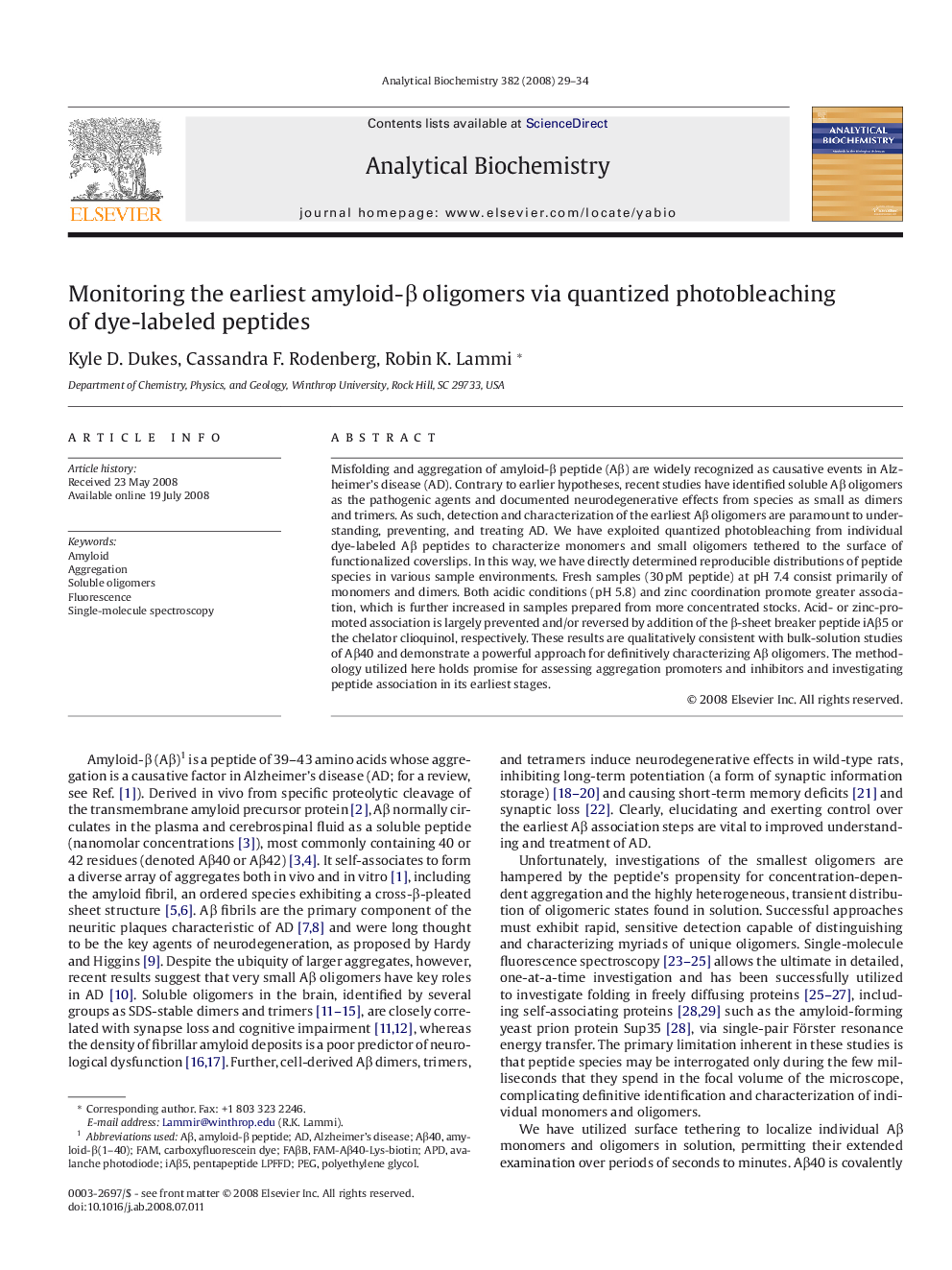| Article ID | Journal | Published Year | Pages | File Type |
|---|---|---|---|---|
| 1174563 | Analytical Biochemistry | 2008 | 6 Pages |
Misfolding and aggregation of amyloid-β peptide (Aβ) are widely recognized as causative events in Alzheimer’s disease (AD). Contrary to earlier hypotheses, recent studies have identified soluble Aβ oligomers as the pathogenic agents and documented neurodegenerative effects from species as small as dimers and trimers. As such, detection and characterization of the earliest Aβ oligomers are paramount to understanding, preventing, and treating AD. We have exploited quantized photobleaching from individual dye-labeled Aβ peptides to characterize monomers and small oligomers tethered to the surface of functionalized coverslips. In this way, we have directly determined reproducible distributions of peptide species in various sample environments. Fresh samples (30 pM peptide) at pH 7.4 consist primarily of monomers and dimers. Both acidic conditions (pH 5.8) and zinc coordination promote greater association, which is further increased in samples prepared from more concentrated stocks. Acid- or zinc-promoted association is largely prevented and/or reversed by addition of the β-sheet breaker peptide iAβ5 or the chelator clioquinol, respectively. These results are qualitatively consistent with bulk-solution studies of Aβ40 and demonstrate a powerful approach for definitively characterizing Aβ oligomers. The methodology utilized here holds promise for assessing aggregation promoters and inhibitors and investigating peptide association in its earliest stages.
